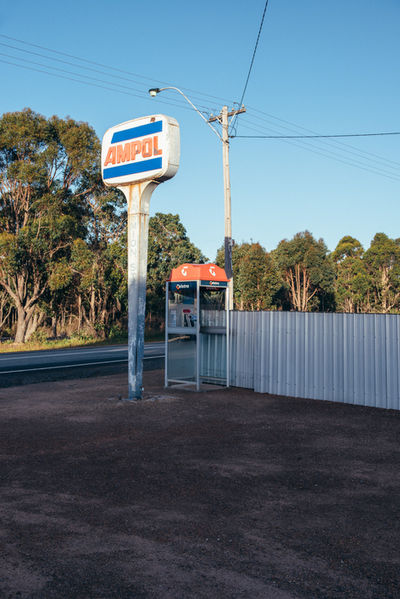
On the Line
The spacelessness of place
In the 1970s, Edward Relph wrote Place and Placelessness, he was mostly concerned with the increasingly standardised nature of the places we make in a globalised world and essentially argued that these generic places (think, malls, airports, chain restaurants, theme parks, etc.) were soulless - they were placeless. A certain idea of places as traditional and organic was born from this and many began to criticise the new globalised places and the suburban dream.
Doreen Massey responded to Relph and the critics of globalisation in the 1990s with her A Global Sense of Place in which she focuses on her street in London complete with its Pakistani shop and internationally-bound airplanes flying overhead, etc. She uses her case study to argue that globalised places are just as generative of a genuine endemic sense of place as more traditionally-thought rural places. Both authors, even though they draw different conclusions, reflect upon which socio-material spaces are most productive of sense of place, and by extension, which socio-material environment allow us to derive a resilient sense of self (see Jeff Malpas).
In this photographic series I reflect on the relationship between phones and places. Taking a look at the precarious presence of phonebooths brings about a reflection on the changes in our physical world, the changes in the ways our dwellings look and feel, which Relph focuses on, but it simultaneously brings about the question of the digitalisation of the material world and the disappearance of physical places with a specific function for human activity, in favour of a digital network centred on individuals' smart phones, which perhaps relates closer to Massey's Global Sense of Place.
Phonebooths and their mark on specific places are disappearing - this in itself is worth documenting - and, at the same time, their 'smart' replacements essentially make most places redundant, there is no longer a need to go to specific places to do the things we do, we can now do all these things now-here (nowhere and everywhere, constantly). The hard material phone booth whose purpose was limited to making phone calls (and shelter from the rain), has become a digital phone booth; it is ubiquitous and provides a wide array of connections and means communications (payments, texts, photographs, videos). We do not go places to make phone calls any longer, the world comes to us through our phones. Our banks, our universities, our libraries, our supermarkets, our films, our homemade videos all come through our phones. The disappearance of spaces that were specific to certain social activities clearly affects the social fabric, for better or for worse.
This isn't a nostalgic piece, it is merely a time to pause to consider how might this affect the way we navigate and the way we relate to the spatial socio-material world we inhabit.
There is a second reading, and no-doubt many more, that I enjoy wondering about. It appears that repetitively taking photographs of different, yet similar objects (I literally have hundreds of phone booth photographs), puts the viewer in the position of wanting to provide a story or even agency to the object (see also Where Trolleys Are). Thus, rather than consider how we relate to the world and to telephones, the lunatic alternative is to attempt to consider what the story of these phone booths might be, or what it might be like to be a Telstra phone booths in urban and rural Australia - an exercise speculative materialists will no doubt enjoy.
1. Relph, Edward, 1976, Place and Placelessness, London, Pion Limited.
2. Massey, Doreen, 1991, A Global Sense of Place, Marxism today, 35 (6), 24-29.
3. Malpas, Jeff, 1999, Place and Experience: a philosophical topography, Cambridge, Cambridge University Press.
























